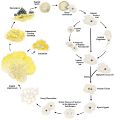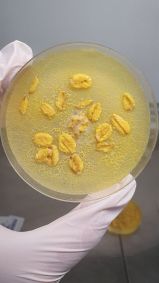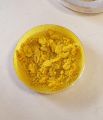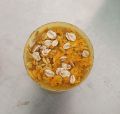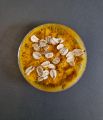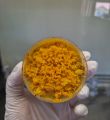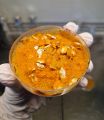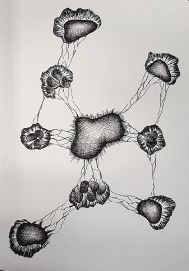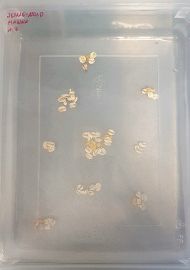(Text) |
mNo edit summary Tag: 2017 source edit |
||
| (9 intermediate revisions by the same user not shown) | |||
| Line 14: | Line 14: | ||
'''<big><u>Growing of Physarum</u></big>''' | '''<big><u>Growing of Physarum</u></big>''' | ||
To be able to use the plasmodium for projects or study purposes, bigger cultures of Physarum have to be grown. | To be able to use the plasmodium for projects or study purposes, bigger cultures of Physarum have to be grown. | ||
'''<big>Step 1: Preparing petri dishes:</big>''' | '''<big>Step 1: Preparing petri dishes:</big>''' | ||
| Line 41: | Line 41: | ||
* Stir and heat the mixture until it's boiling (by using the stovetop or microwave) and take it off the heat before it boils over | * Stir and heat the mixture until it's boiling (by using the stovetop or microwave) and take it off the heat before it boils over | ||
* Pour the mixture into the petri dishes until they are max. halfway full, close the lids and let them cool down until the medium has solidified | * Pour the mixture into the petri dishes until they are max. halfway full, close the lids and let them cool down until the medium has solidified | ||
| Line 90: | Line 88: | ||
File:Physarum preserved.jpg|Physarum preserved | File:Physarum preserved.jpg|Physarum preserved | ||
File:Physarum preserved2.jpg|Physarum preserved day 1 | File:Physarum preserved2.jpg|Physarum preserved day 1 | ||
</gallery>'''<big>Step 4: Taking care of Physarum</big>''' | </gallery> | ||
'''<big>Step 4: Taking care of Physarum</big>''' | |||
To keep the slime mold from escaping it has to be fed regularly. How often and in what way it has to be fed depends on the purpose of the culture. It is possible to do this under the flow hood in an attempt to keep things sterile, however it is also possible to do it on the usual work space (disinfect first and still keep hands and tweezers clean) | To keep the slime mold from escaping it has to be fed regularly. How often and in what way it has to be fed depends on the purpose of the culture. It is possible to do this under the flow hood in an attempt to keep things sterile, however it is also possible to do it on the usual work space (disinfect first and still keep hands and tweezers clean) | ||
| Line 108: | Line 110: | ||
File:Day 9..jpg|Day 9 | File:Day 9..jpg|Day 9 | ||
</gallery> | </gallery> | ||
'''<u><big>Projects with Physarum Policephalum</big></u>''' | '''<u><big>Projects with Physarum Policephalum</big></u>''' | ||
'''<big>Improving Tokyo's rail system (by Atsushi Tero from Hokkaido University, Sapporo, Japan)</big>''' | '''<big>Improving Tokyo's rail system (by Atsushi Tero from Hokkaido University, Sapporo, Japan)</big>''' | ||
| Line 126: | Line 132: | ||
'''<big> | |||
'''<big>"Fusion" - Creating Art(ist) with slime mold (Project by Hanna Bremerich, Bauhaus Universität Weimar)</big>''' | |||
With this project I planned on permanently fusing the artwork and the artist together so that they are completely inseparable. Usually the answer to the question of how much of a connection there is between an artist and their work isn't a trivial one. There is no doubt that because of the intention and the process of creating the artwork there is always "a part" of the artist themselves integrated in the painting but mostly it's not always a physical connection and that is exactly what I wanted to achieve: An artwork that is the artist themselves at the same time. | |||
[[File:Sketch Physarum.jpg|thumb|271x271px|Sketch]] | |||
* To start the project I studied the movement of the slime mold during our course "Growing microorganisms for bioart projects" so that I could create a drawing which the slime mold theoretically could create in a similar way. | |||
[[File:Fusion1.jpg|thumb|270x270px|Day 1]] | |||
* I prepared plastic dishes with an agar-agar-medium in the dimensions of a A4-sheet | |||
* I placed the oat flakes with Physarum on them in the spots of bigger "blobs" and the food on the spots with that represented the individual flakes | |||
* I checked on the slime mold every day and kept placing new oat flakes onto the same spots every day so that the slime mold would hopefully not move away from the spots resembled in the drawing and would create something similar | |||
* After 14 days I ended the project | |||
* The slime mold created multiple versions that were similar to the drawing, however day 11-14 were the closest | |||
<gallery> | |||
File:Fusion2.jpg|Day 2 | |||
File:Fusion3.jpg|Day 3 | |||
File:Fusion4.jpg|Day 4 | |||
File:Fusion5.jpg|Day 5 | |||
File:Fusion6.jpg|Day 6 | |||
File:Fusion7.jpg|Day 7 | |||
File:Fusion8.jpg|Day 8 | |||
File:Fusion9.jpg|Day 9 | |||
File:Fusion10.jpg|Day 10 | |||
File:Fusion11.jpg|Day 11 | |||
File:Fusion12.jpg|Day 12 | |||
File:Fusion13.jpg|Day 13 | |||
File:Fusion14.jpg|Day 14 | |||
</gallery> | |||
//Doku by Hanna Bremerich | |||
Latest revision as of 03:07, 26 August 2024
Species
Physarum Policephalum is an eucaryotic organism which belongs to the class of Myxogastria. It passes a life cycle of morphologic phases, with the phase in which the multinucleate cells form a plasmodium (thin film, with visible branches) often being used for study purposes. This slime mold can be found in cool, humid, darker places, for example on rotten wood in the forest.
Images taken from: https://www.ctvnews.ca/sci-tech/strange-yellow-slime-mold-can-remember-where-it-left-food-study-says-1.5326525
https://knowledge.carolina.com/discipline/life-science/biology/the-slime-mold-physarum-polycephalum/
Growing of Physarum
To be able to use the plasmodium for projects or study purposes, bigger cultures of Physarum have to be grown.
Step 1: Preparing petri dishes:
Materials: Petri dishes, Erlenmeyer flask/pot, distilled water/tap water, powdered agar, scale, spoon, aluminium foil
The easiest gel to make is agar-agar-medium at a ratio of 1 to 100:
| Component | Quantity | Custom Quantity |
|---|---|---|
| water | 100 ml | x |
| agar agar | 1 g | x |
- Fill the needed amount of water either into a pot or the Erlenmeyer flask
- Weigh the needed amount of powdered agar (e.g. by using some aluminium foil as a dish)
- Stir the agar into the water
- Stir and heat the mixture until it's boiling (by using the stovetop or microwave) and take it off the heat before it boils over
- Pour the mixture into the petri dishes until they are max. halfway full, close the lids and let them cool down until the medium has solidified
Step 2: Preparing food for the slime mold
Since Physarum is capable of ingesting material by phagocytosis, it needs "food" to grow, if it's starved, it will escape.
A supply of oat flakes can be used as a source of food.
Newly bought oat flakes can be put into a sealed container (e.g. a glass bottle or a mason jar), but if you want to try to prevent future contamination as much as possible, the oat flakes can be sterilized:
Materials: Glass jars with lids, cotton wadding, aluminium foil, water, pressure cooker
- Prepare a jar with a lid by putting a hole into the lid and insert some cotton wadding tightly into the hole (the hole in the lid is very important, otherwise the jar might burst inside the pressure cooker)
- Fill some oat flakes into the jars, close the lid and put aluminium foil over the lid to prevent contamination later on (cover the lid completely)
- Pour enough water into the pressure cooker, but not so much that the glasses are floating (follow manual for guidance), place the glasses inside
- Close and lock the lid and wait until the needed temperature and pressure point are reached (121°C, 15 PSI)
- Reduce the at minimum heat at which it is possible for the water to keep boiling
- From that point on, wait about 50 minutes and ensure that the pressure of 15 PSI is kept throughout this time
- After that wait for the cooker to cool down on it's own and only then release the pressure to prevent it from boiling over
- Take out the jars, let them cool down and only open them under a flow hood with gloves and disinfected hands
Step 3: Starting a new culture
Materials: gloves, tweezers, bunsen burner, paper towels, 70%-alcohol, petri dish with agar-medium, oat flakes
- (put on the flow hood and disinfect the surface you are working on with alcohol, however the flow hood is not absolutely necessary )
- put on gloves
- spray a paper towel with alcohol and clean the tweezers, then hold them over the flame of the burner (doesn't have to be long) (and put them into the flow hood)
- disinfect your hands with alcohol before working with the slime mold
There are two ways for starting a new culture of Physarum
- Using a part of an already existing culture:
- From the existing culture take an oat flake (or multiple) with slime mold on it with the tweezers and place them in the middle of the new petri dish
- Place oat flakes as food in the petri dish around the flake with the mold
- To prevent future contamination the petri dish can be sealed with Parafilm
- Preserved Physarum comes dried on a filter paper inside a sealed bag
- Place the paper in the middle of the petri dish and put drops of water on the paper to reactivate the slime mold
- Place oat flakes around the paper
- Optionally the petri dish can be sealed with Parafilm
Step 4: Taking care of Physarum
To keep the slime mold from escaping it has to be fed regularly. How often and in what way it has to be fed depends on the purpose of the culture. It is possible to do this under the flow hood in an attempt to keep things sterile, however it is also possible to do it on the usual work space (disinfect first and still keep hands and tweezers clean)
- In the beginning feed Physarum every two days by using the tweezers to drop a couple of oat flakes into the petri dish until the dish is completely covered with Plasmodium
- After the culture has reached this stage, just throw the oat flakes on top of it
- Since the slime mold grows quickly it may need food every day at some point
- It is possible to keep making new cultures from this one by repeating the previous steps
Projects with Physarum Policephalum
Improving Tokyo's rail system (by Atsushi Tero from Hokkaido University, Sapporo, Japan)
While looking for food to continue growing the slime mold detects the food from afar and expands various brands in it's direction. When it has reached the food sources it only keeps the branches with the most efficient way of transporting the nutrients.
Japanese scientists from the Hokkaido University in Sapporo used this characteristic to try and find room for improvement in Tokyo's rail system.
They placed oat flakes in a wet dish resembling the locations of different major cities in the Tokyo area. Since the slime mold prefers dark places, it was possible for Tero to use bright light as mountains and lakes so that the slime mold would avoid these spots while growing towards the oat flakes.
In the end the slime mold created a network which was very similar to the actual rail system.
Source: https://www.nationalgeographic.com/science/article/slime-mould-attacks-simulates-tokyo-rail-network
"Fusion" - Creating Art(ist) with slime mold (Project by Hanna Bremerich, Bauhaus Universität Weimar)
With this project I planned on permanently fusing the artwork and the artist together so that they are completely inseparable. Usually the answer to the question of how much of a connection there is between an artist and their work isn't a trivial one. There is no doubt that because of the intention and the process of creating the artwork there is always "a part" of the artist themselves integrated in the painting but mostly it's not always a physical connection and that is exactly what I wanted to achieve: An artwork that is the artist themselves at the same time.
- To start the project I studied the movement of the slime mold during our course "Growing microorganisms for bioart projects" so that I could create a drawing which the slime mold theoretically could create in a similar way.
- I prepared plastic dishes with an agar-agar-medium in the dimensions of a A4-sheet
- I placed the oat flakes with Physarum on them in the spots of bigger "blobs" and the food on the spots with that represented the individual flakes
- I checked on the slime mold every day and kept placing new oat flakes onto the same spots every day so that the slime mold would hopefully not move away from the spots resembled in the drawing and would create something similar
- After 14 days I ended the project
- The slime mold created multiple versions that were similar to the drawing, however day 11-14 were the closest
//Doku by Hanna Bremerich

